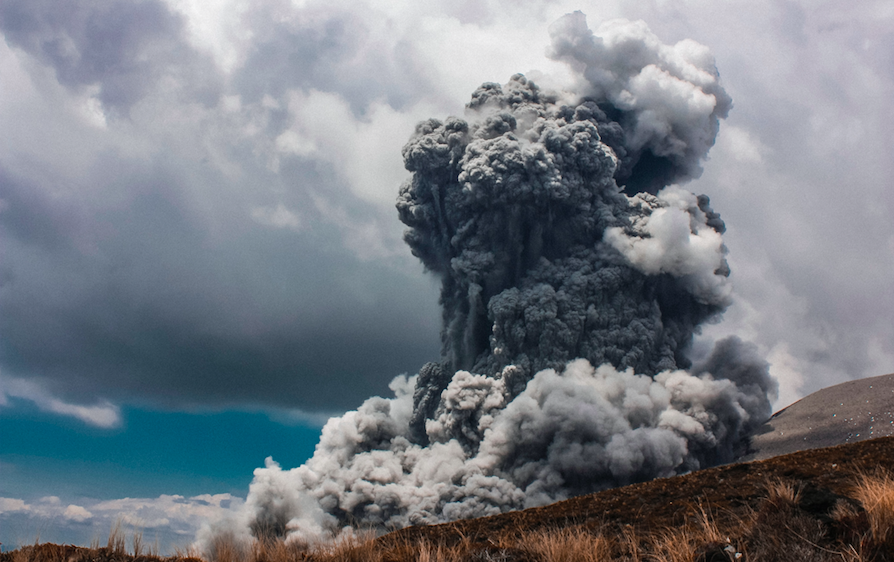Bang! A gun shot. Or the burst of a firework. Explosions, big and small, can cause delight or pain, but always manage to grab your attention. Over the centuries they have been used to win wars, break through defences, and mine deep into the earth for precious materials. But the power they have to generate large quantities of heat or gas very quickly has made them dangerous to handle. Over the years, new explosives have been developed to be not only more powerful, but also safer to use.
Black powder was the first man-made explosive and was discovered in 220 BC by Chinese alchemists. They mixed potassium nitrate, charcoal and sulfur in a furnace, and bang – an explosion. Black powder is also known as gun powder but is called black to distinguish it from modern day smokeless powder (also used in guns but doesn’t produce any black smoke unlike black powder).
Gun powder was first introduced to Europe in the 13th century, when English monk Roger Bacon experimented with mixtures containing potassium nitrate. In the particular mixture of gun powder, charcoal and sulfur act as the fuel, and potassium nitrate as the oxidiser (providing a source of oxygen needed for the combustion). Its ability to produce large amounts of heat and gas upon ignition led to it being widely used as a blasting power in quarrying, mining and road building, and also as a propellant in firearms, rockets and fireworks (where small amounts of elemental salts are included to give them their different colours.)
Nitroglycerine was the first explosive to be made that was stronger than black powder and was discovered in 1846 by Italian Professor Ascanio Sobereo. Swedish Inventor Immanuel Nobel, with his sons Alfred and Emil, developed a method to manufacture it, but struggled with its transportation. Being an oily fluid extremely sensitive to shock, it had a high risk of accidentally initiating and exploding, making it very dangerous. Factory explosions killed many people, including Emil Nobel, Alfred’s younger brother, and this encouraged Alfred to seek more ways to make it safer.
After experimenting with different additives, Alfred discovered that if nitroglycerine was mixed with Kielsguhr (an absorbent clay) the mixture could be made into a paste and be made much safer. This could be shaped into rods, which when inserted into holes in the rock, could be detonated using a blasting cap (a small amount of a sensitive explosive used to detonate a larger amount of a less sensitive explosive). Hence dynamite was made, and soon patented in 1867. The ability to shape dynamite into rods meant it was convenient to use and also much better at breaking through rock than black powder. Dynamite became widely used in construction and tunnel excavation, particularly important during the Industrial Revolution, and greatly increased Nobel’s wealth.
Dynamite was Alfred Nobel’s most famous invention, but sadly his work with explosives resulted in many people losing their lives. In 1868, the French newspapers mistook the death of his brother, Ludvig, for Alfred himself, and wrote an obituary announcing ‘the master of death is dead’. Shocked, and not wishing to be remembered in this way, Alfred changed his will to leave the majority of his money, 31 million SEK (almost £150 million in today’s money) to be ‘distributed annually as prizes for those who had had the greatest benefit to humankind’ in the fields of Physics, Chemistry, Literature, Peace, Physiology or Medicine. And so the Nobel Prizes were created.
TNT is another was explosive well known in popular culture today, and was first prepared in 1863 by Wilbrand, a German chemist. Originally, its only use was as a yellow dye, and it wasn’t until almost 30 years later that it was discovered to be explosive (because it is difficult to detonate). It is made in three stages by nitrating sequentially nitrating toluene three times. TNT isn’t sensitive to shock or friction, so it has less of a risk of it accidentally detonating, making it much safer to use. However it is poisonous and when in contact with skin, causes irritation and the skin to turn yellow-orange. This gave the workers in WWI who produced TNT the nickname ‘canary girls’.
Towards the end of the Second World War, new types of nuclear explosives were being developed. These released large amount of energy by nuclear fission or fusion reactions. The Trinity test took place on 16th July 1945, and was the first man made nuclear explosion. The strength of the explosion was huge, and equivalent to 15,000-20,000 tonnes of TNT being detonated. Following this, two nuclear bombs Little Boy and Fat Man were dropped on Hiroshima and Nagasaki on the 6th and 9th August 1945 respectively. These are the only two nuclear weapons that have been used in combat to date. The radius of destruction extended for 1 mile, and strength of the explosion was equivalent to a phenomenal 16 kilotons of TNT.
Although explosives can cause a lot of damage, we can only hope for the future that they can be made safer and used for peace, not war.





